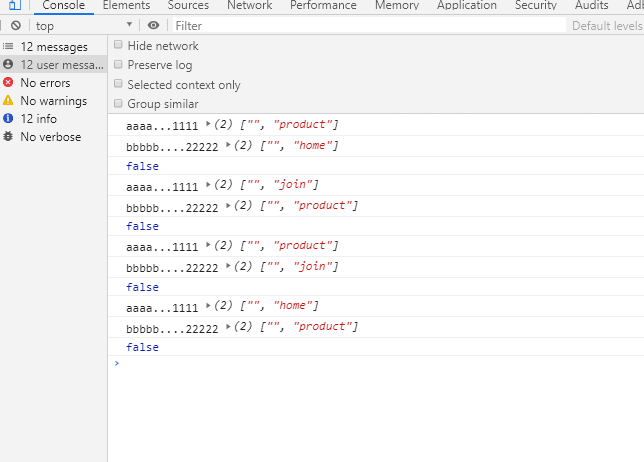History 接口
属性
History.length 表示历史会话中元素的数目
History.scrollRestoration 允许Web应用程序在历史导航上显式地设置默认滚动恢复行为。此属性可以是自动的(auto)或者手动的(manual)。
History.state 返回一个表示历史堆栈顶部的状态的值。这是一种可以不必等待popstate 事件而查看状态而的方式。
方法
History.back()
等同于history.go(-1)
History.forward()
等同于historygo(1)
History.go()
这个方法中如果参数超出范围或者不对就不会起效果
History.pushState()
pushState() 带有三个参数:一个状态对象,一个标题(现在被忽略了),以及一个可选的URL地址。下面将对这三个参数进行细致的检查
function pushHistory() {
var state = {
title: "title",
url: "#"
};
window.history.pushState(state, "title", "#xx");
}
监听浏览器返回按钮
function pushHistory() {
var state = {
title: "title",
url: "#"
};
window.history.pushState(state, "title", "#xx");
}
pushHistory();
window.addEventListener("popstate", function(e) {
console.log(e);
alert("我监听到了浏览器的返回按钮事件啦");//根据自己的需求实现自己的功能
}, false);
禁止返回上一页的一种方案
history.pushState(null, null, document.URL);
window.addEventListener("popstate",function(e) {
console.log(e);
history.pushState(null, null, document.URL);
}, false);
这个其实就是利用pushState向浏览历史列表中插入当前页面,在点击后退前和点击时都插入一次,那样无论点前进还是后退永远都会留在这个页面了
JS监听浏览器前进后退事件
window.addEventListener('popstate', function(e) {
init++
if (init < 2) {
router.beforeEach((to, from, next) => {
let arr1 = to.path.split('/')
console.log('aaaa...1111',arr1)
let arr2 = from.path.split('/')
console.log('bbbbb....22222',arr2)
if (arr1.length === 2) {
if (arr1[1].length === 0) {
arr1.splice(1, 1)
console.log('ccccc',arr1)
}
}
if (arr2.length === 2) {
if (arr2[1].length === 0) {
arr2.splice(1, 1)
}
}
if (arr1.length < arr2.length) {
router.toGoBack()
} else {
router.toGoIn()
}
next()
})
}
}, false)
